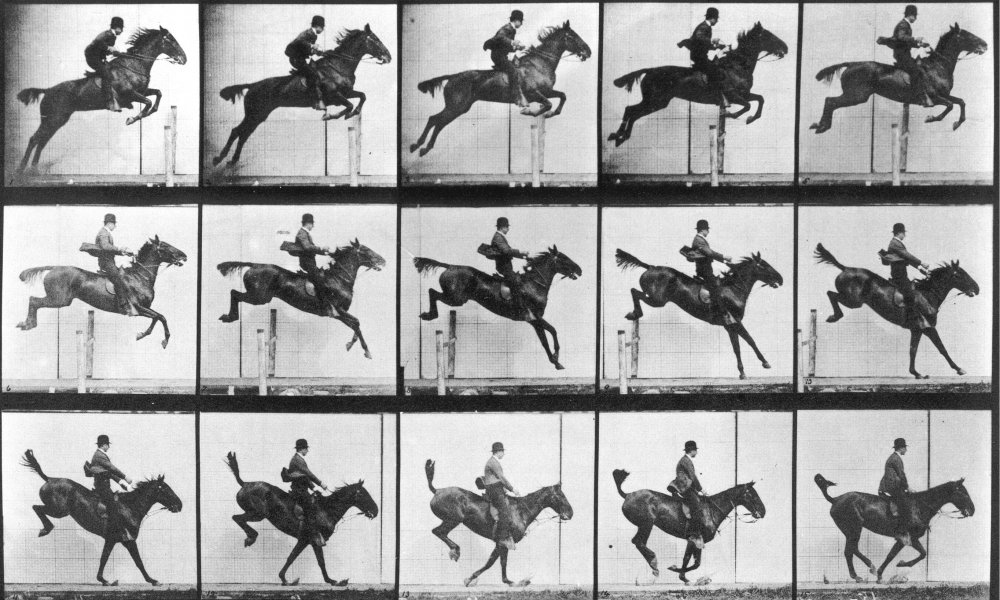Tucked away deep in the University Archives, there is a collection of 781 photographs featuring nude Penn students and faculty. The collection is the renowned work of Eadweard Muybridge, an English photographer who was commissioned by the University in 1883 to conduct motion photography work on the Penn and Veterinary Hospital grounds.
These pictures created a controversy at the time of their publication; many Penn community members labeled them “pornographic.”
Muybridge’s work was brought into the purview of the University thanks to Thomas Eakins and Fairman Rogers, two former professors affiliated with the Pennsylvania Academy of Fine Arts and Engineering School, respectively. Eakins and Rogers were intrigued by Muybridge’s work, most notably his Palo Alto photographs of the Leland Stanford horses — yes, that Stanford. Muybridge famously proved that there is a point in a horse’s gallop when all four feet are off the ground. Accordingly, Eakins and Rogers reached out to then-Provost William Pepper, to bring Muybridge to Penn. Pepper and the trustees agreed that hosting Muybridge’s motion photography work would bring prestige to Penn — the trustees soon discovered this was not the case.

Muybridge accepted Penn’s offer, and with good reason; the University granted Muybridge $5000 — about $130,000 today, adjusted for inflation — constructed for him a photography studio equipped with advanced photography gear, and even created a board of six Penn and PAFA faculty to supervise the work.
But here’s the catch. Despite the incontestable contributions that Muybridge’s work at Penn made to human and animal locomotion studies, and the critical role of the University in funding the project, Muybridge’s photographs of women for the project border on pornographic and fetishizing.
I journeyed into the Van Pelt stacks to find the complete collection of Muybridge’s "Animal Locomotion" — a misnomer, as most of the pictures are of humans. As I thumbed through the beginnings of the 629-page thick pictorial encyclopedia, I was intrigued by the seemingly endless stop-motion pictures of leap-frogging and pole-vaulting naked male Penn students.
That is, most of Muybridge’s work with male Penn athletes and faculty involved various sequences of locomotion and sports movements such as running, rowing, somersaulting, batting — photographed entirely in the nude.
SEE MORE:
Jennifer Lee | Why are Penn Koreans speaking in Korean?
Daily Pennsylvanian archives dating back to 1885 now available online
As I continued to leaf through the book, I came across Muybridge’s work with female subjects, who are unnamed in the University Archive’s formal description of the Penn Muybridge collection. I noticed a marked difference in these photos in relation to the male photos. Just to name a few, the females' photos portrayed sensual poses of women undressing, kissing, disrobing one another, drying oneself with a towel — none of which was captured on the male models.
l began to feel uncomfortable looking at the photos — this work didn’t strike me as a human motion study, but rather like the stills of a bootleg pornographic film.
Today, any official description of Muybridge’s work issued by Penn fails to mention the numerous women photographed. Although I came to discover through an outside source that Muybridge’s female subjects came “from all classes of society,” presumably from Philadelphia, Penn names only the male faculty and male student athletes featured. Even the Penn Medicine News Blog mentions only the men photographed in the 781-picture collection.
Further, a justification on why there are suggestive photographs stored in a University-chartered and managed archive is needed. Some may argue that Muybridge’s female photographs fall under the umbrella of “human motion,” but do photos of women on the toilet really constitute representative human movement? The mission of the University Archive is to “ensure the timeless preservation of historically significant documents and other materials that reflect the University's origins and development.” Is the continual curation of such pictures in accordance with that mission?
The University should be more open with regards to contents that are displayed and memorialized on campus, especially those that are more dated. As cultural sensitivities evolve and what is considered "in good taste" changes, Penn should be more mindful and transparent in describing older projects. For example, for the Muybridge project, the University Archives should issue a content warning on the pornographic-leaning stills in his collection.
I am not suggesting that the Archives eliminate controversial photography work or stop accepting them for display. That would be a violation of academic and artistic freedom. Rather, they should be more vigilant in conditioning viewers before witnessing potentially upsetting material. This should be the case for any future or previous works that the Archives chooses to induct into the collection.
The Penn community can judge this for itself, as the entire collection is currently available for view in the University Archives.

JENNIFER LEE is a College sophomore from Fairfax, Va. studying international relations. Her email is leej@dailypennsylvanian.com



